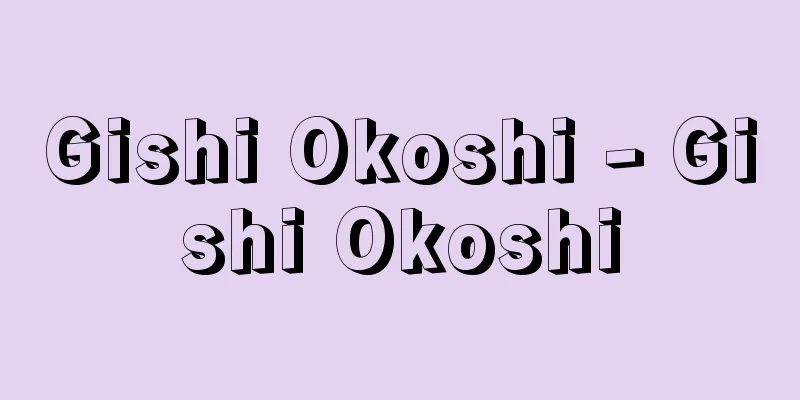Insurance premium - hokenryo (English spelling)

|
In an insurance contract, the insurer, one of the parties to the contract, pays a benefit called risk bearing, while the other party, the policyholder, pays a remuneration (counter-benefit) to the insurer, which is called the insurance premium. Insurance premiums (business premiums) consist of a net premium and an additional premium, the former of which is used to pay insurance benefits (insurance claims), and the latter is mainly used to pay the insurer's business expenses such as personnel expenses and property expenses. In life insurance, the net premium is calculated for each age, mainly based on the mortality rate and the expected interest rate. However, when calculating the net premium for one year, the policyholder's insurance burden increases year by year as the mortality rate increases, and the rate becomes prohibitively high as the insurer ages. This is called the natural premium, but since such an increase in premiums year by year is not practical for long-term life insurance contracts, the total natural premium is allocated evenly to all insurance years. This averaged premium is called the level premium. In contrast, in non-life insurance, the net premium is calculated according to the risk level of each target property. However, in non-life insurance, the frequency of accidents is not averaged out like in life insurance, and the loss ratio is unstable. For this reason, it is quite difficult to judge whether the insurance premium rate is appropriate or not, but if this rate is left to free competition, it may be unfairly lowered by competition between insurance companies, which may jeopardize the insurance business. For this reason, in the past, in the Japanese non-life insurance market, depending on the type of insurance, three types of rates coexisted: non-life insurance rate calculation association rates (fire insurance, automobile insurance, etc.) calculated by the Non-Life Insurance Rate Calculation Association and the Automobile Insurance Rate Calculation Association under the Act on Non-Life Insurance Rate Calculation Associations (Rating Association Act) and binding on each insurance company, agreement rates (aviation insurance, etc.) agreed upon between insurance companies, and free rates (cargo insurance, etc.) that each company can decide as they see fit. However, in 1998, the Rate Association Act was revised as follows: The rating organizations under the Rate Association Law include the Non-life Insurance Rating Association, which calculates rates for fire, earthquake, and personal injury insurance, and the Automobile Insurance Rating Association, which calculates rates for automobile liability insurance (compulsory automobile liability insurance) and automobile insurance, but the obligation for members to use the rates calculated by these two organizations has been abolished. There are two types of insurance rates calculated by the rate associations: reference net rates and standard rates. The former only relates to net insurance rates and can be used as a basis for members to calculate their own insurance rates, and the types of insurance for which reference net rates are calculated are fire, personal injury, automobile, medical expenses, and nursing care expenses insurance. The latter includes not only net insurance rates but also additional insurance rates, and the types of insurance for which standard rates are calculated are compulsory automobile liability insurance and earthquake insurance. In July 2002, the two organizations merged to become the Non-life Insurance Rating Organization, which currently calculates insurance rates. [Takuji Kaneko and Mitsuo Sakaguchi] [Reference] | |Source: Shogakukan Encyclopedia Nipponica About Encyclopedia Nipponica Information | Legend |
|
保険契約においては、契約の一方の当事者である保険者が危険負担という給付を行うのに対して、他方の当事者である保険契約者は保険者にその報酬(反対給付)を支払うが、この報酬を保険料という。保険料(営業保険料)は純保険料と付加保険料とからなり、前者は保険給付(保険金)の支払いにあてられ、後者はその主要部分が保険者の人件費、物件費などの営業費の支払いにあてられる。純保険料は、生命保険においては死亡率、予定利率をおもな要素として各年齢別に算出される。ただ、1年ごとの純保険料を計算した場合、契約者の保険料負担は死亡率の上昇に伴って年々高くなり、高齢になると禁止的な高料率となる。これを自然保険料というが、このように保険料が年々高くなることは、長期の生命保険契約に対しては実際的でないところから、自然保険料の総額を全保険年度に均等に割り当てることが行われる。この平均化された保険料を平準保険料という。これに対して損害保険では、各対象物件の危険度に対応して純保険料が算定されている。ただ、損害保険においては、事故発生の頻度が生命保険の場合のように平均化しておらず、その損害率は不安定である。このため損害保険では、保険料率が適正であるか否かを判断することがなかなか困難であるが、この料率を自由競争にゆだねておけば、保険会社間の競争で不当に低下し、保険経営を危うくすることにもなりかねない。このため、従来、日本の損害保険市場においては、保険種目によって、「損害保険料率算出団体に関する法律」(料率団体法)により損害保険料率算定会および自動車保険料率算定会が算定して各保険会社に対し拘束力をもつ算定会料率(火災保険、自動車保険など)、各保険会社間で協定される協定料率(航空保険など)、および各社が適当に決定しうる自由料率(貨物保険など)の三つが併存していた。しかし、1998年(平成10)に料率団体法が改正され、次のように改められた。料率団体法に基づく料率団体には、火災・地震・傷害保険の料率算出を行う損害保険料率算定会と自動車損害賠償責任保険(自賠責保険)・自動車保険の料率算出を行う自動車保険料率算定会があるが、両団体が算出する保険料率に至っては会員の使用義務は廃止された。なお、料率団体が算出する保険料率には、参考純率と基準料率の2種類がある。前者は、純保険料率にのみかかわるもので、会員が自社の保険料率を算出する際に基礎としうるものであり、参考純率を算出する対象保険種類は火災・傷害・自動車・医療費用・介護費用保険である。後者は、純保険料率のみならず付加保険料率をも含むもので、基準料率を算出する対象保険種類は自賠責・地震保険である。なお、2002年7月に両団体は統合し損害保険料率算出機構となり、現在は同機構が保険料率の算出を行っている。 [金子卓治・坂口光男] [参照項目] | |出典 小学館 日本大百科全書(ニッポニカ)日本大百科全書(ニッポニカ)について 情報 | 凡例 |
>>: Insurance terms and conditions
Recommend
Stone Throwing Battle - Ishinage Gassen
... The samurai era's Injida was still practi...
"Love's Memento" - Love's Memento
…He also won the Mainichi Publishing Culture Awar...
Eckert, F.
…The import of Western music in the early Meiji p...
Graves' disease - Graves' disease
Also known as Graves' disease. Hyperthyroidism...
Bimbisāra (English spelling)
King of Magadha in ancient India (reigned from ar...
Bat fan - Kawahoriougi
〘Noun〙 (From the fact that the open shape resemble...
Sata clan - Satauji
A powerful clan based in Minamimata, Nejimein, Osu...
Omori Daikansho - Omori Daikansho
…Furthermore, in 1717, Masashige Okudaira, who ha...
Friedrich
... The man who put an end to this stagnation was...
Dakyuu
It can also be read as "mariuchi." It i...
Red Barnacle - Red Barnacle
...It is distributed from northern Honshu to the ...
Anterior medullary funiculus
… [External structure] On the surface of the medu...
Bonseki - Bonseki
This is a traditional art unique to Japan that cr...
Abe no Miushi - Abe no Miushi
Year of death: Taiho 3, leap year 4, 1 (May 20, 70...
Coolidge, S.
…Mrs. Storr's Uncle Tom's Cabin in 1852 w...









